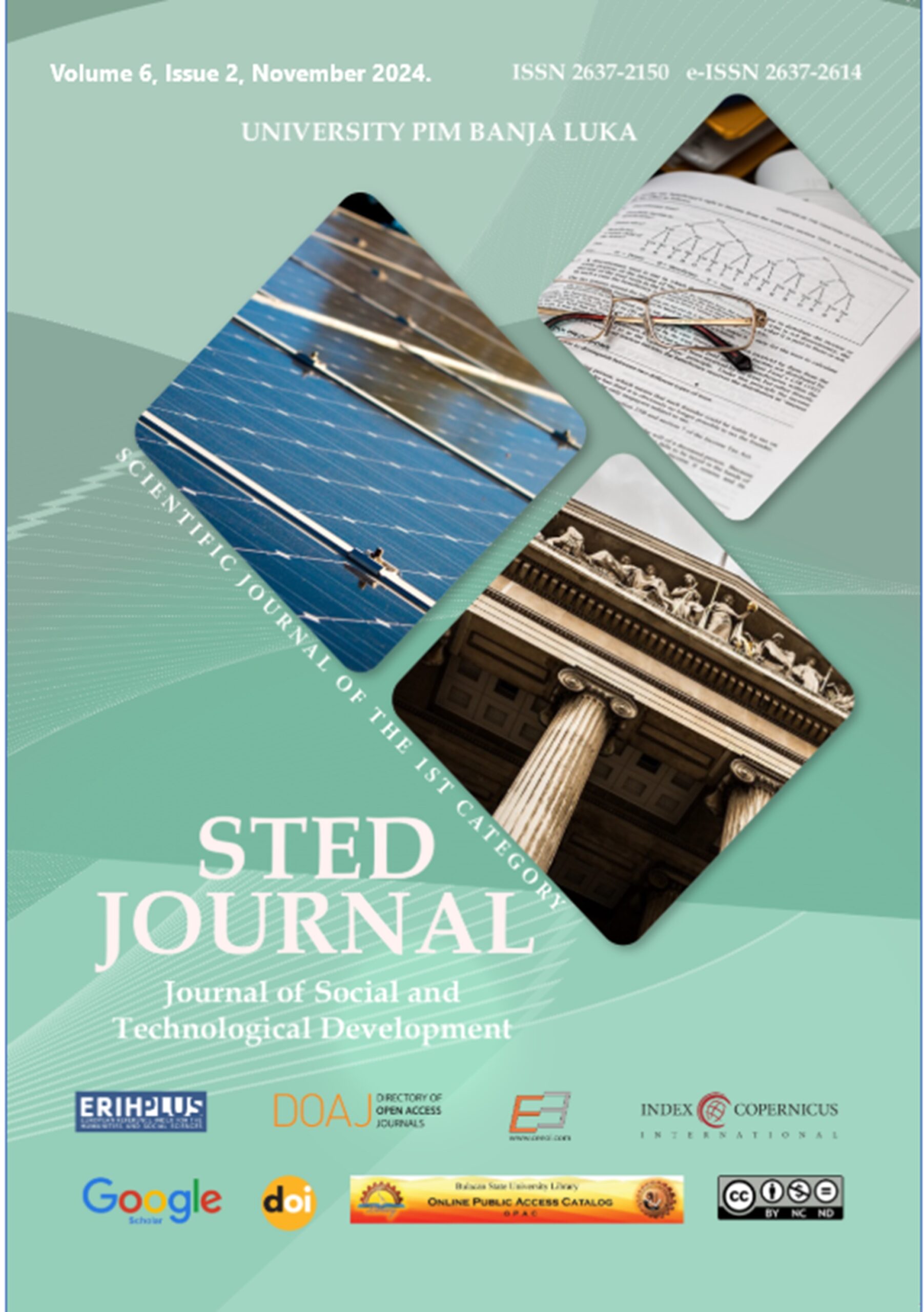ADSORPTION KINETICS AND THERMODYNAMICS OF CIPROFLOXACIN FROM AQUEOUS SOLUTIONS BY MAGNETIC IRON OXIDE NANOPARTICLES MODIFIED MORINGA PODS
DOI:
https://doi.org/10.7251/STEDZ2402010PAbstract
The adsorption process of metal oxide nanoparticles has been studied as an effective means of removing organic and inorganic contaminants from water and wastewater. In this study, iron (III) oxide (Fe3O4) nanoparticles were synthesized in the presence of moringa oleifera pods (MOP) as an adsorbent for ciprofloxacin (CIP) adsorption. Moringa oleifera pod biochar with Fe3O4 particles precipitated on the surface of biochar was synthesized by co-precipitation method. The effect of various parameters such as contact time, pH, metal concentration and adsorbent dosage on the removal efficiency was determined. The maximum adsorption capacity of CIP by magnetic moringa composite (MMC) was 96.12 mg/g. The Langmuir and Freundlich isotherm equations were used to analyze the equilibrium isotherm data. The adsorption process fit well with the second-order kinetics in all cases, and the Langmuir isotherm equation fitted well with the experimental data.

